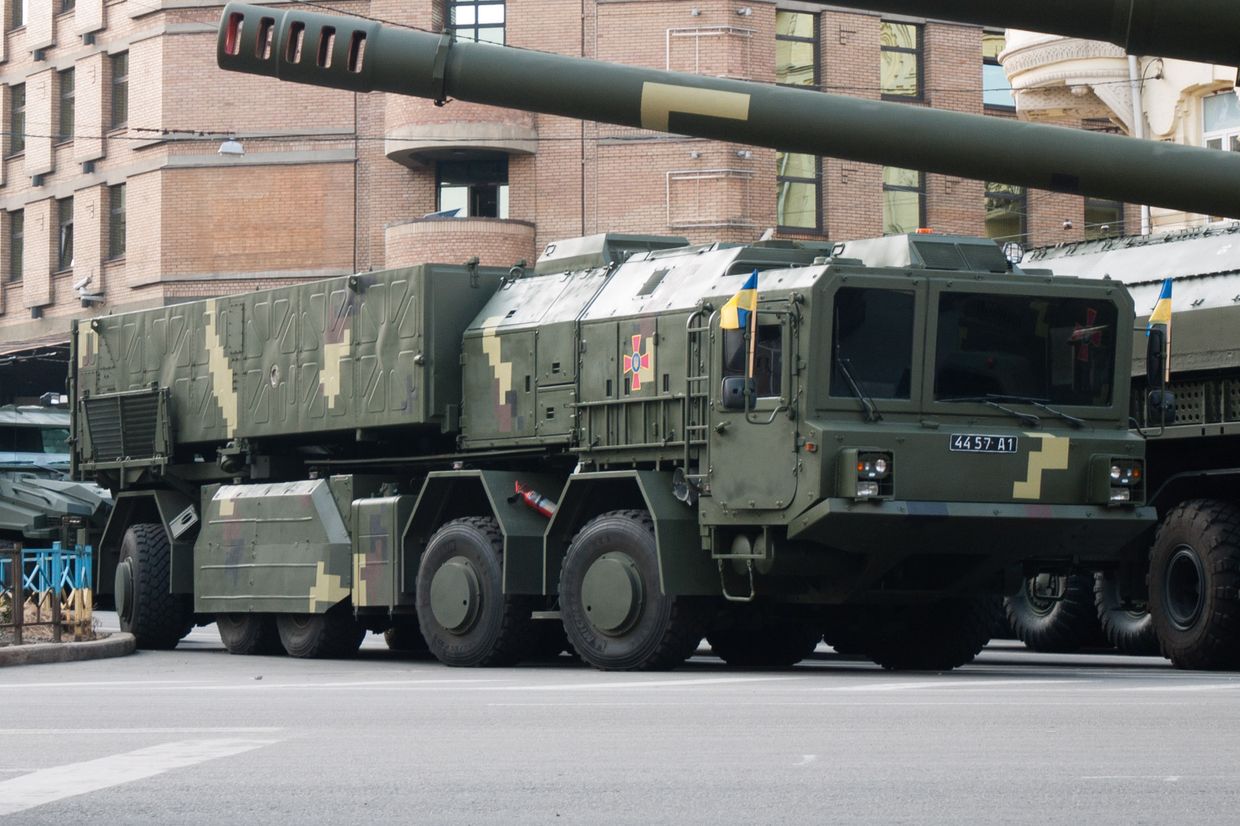Years back, Russia began the development of several new strategic weapons, as Russian President Vladimir Putin had called them, to modernize the country’s military and give it an edge against the so-called West, a conflict that was in full swing.
Among them was the RS-28 Sarmat ICBM, known as Satan II. Following the start of the full-scale war, the missile was officially operational, according to Russian state officials.
In late September, however, an explosion crater, roughly 60 meters wide at the Yubileynaya silo launch site at the Russian cosmodrome Plesetsk in the town of Mirny, showed that official statements were most likely an exaggeration.
Although the Kremlin has denied that it conducted ICBM test launches, the satellite imagery of the launch site showed an explosion that was linked to the Sarmat missile. If confirmed, this would be the fourth failed Sarmat launch.
"The (RS-28) Sarmat was supposed to enter into service six to seven years ago, and there is already quite a delay. So, I think right now, Russian decision-makers might get a bit nervous," Fabian Hoffmann, a defense expert and doctoral research fellow at the University of Oslo, told the Kyiv Independent.
With Ukrainian troops occupying swats of land in Russia and Ukrainian drones hitting Russian arms depots on a regular occurrence, nuclear saber-rattling was among the last leverages the Kremlin had in an attempt to cut Kyiv from Western weapons and political support.
The Russian military will be able to "determine the conditions" for the use of nuclear weapons, Kremlin spokesperson Dmitry Peskov said on Russian state-controlled television on Sept. 29.
"(The military) closely monitors what weapons are used and how. They are the ones who record the direct involvement of the countries of the collective West in the (war in) Ukraine, and they will not diminish their focus," Peskov said.
Following yet another failed launch, Russia’s ability to act on its threats was questioned.

What do we know about 'Satan II?'
Putin introduced the RS-28 Sarmat in March 2018, along with the hypersonic missile Avangard and the Kinzhal ballistic missile, which is regularly used by Russian forces to attack Ukrainian cities far from the front line.
The 35-meter RS-28 Sarmat silo-based missile is intended to replace the R-36 ICBMs, which are known by the NATO reporting name of SS-18 "Satan." The recent Russian development is reportedly capable of carrying up to 15 nuclear warheads and covering nearly 18,000 kilometers (11,000 miles).
"Each warhead reportedly has a yield of 500 kilotons. So, you get a five-megaton payload, which is quite substantial. These are independently targetable at different sites. So, I have one ICBM, and I can theoretically use that ICBM to launch 10 warheads against 10 cities," Hoffmann said.
The Sarmat's initial launch phase is reportedly short, allowing little time for surveillance systems to track it.
In 2022, after launching an all-out war against Ukraine, Putin said the Sarmat would "reliably ensure the security of Russia from external threats and make those who, in the heat of aggressive rhetoric, try to threaten our country, think twice."
Nothing had followed.

What's wrong with Putin's deadly weapon?
Even though in September 2023, Yuri Borisov, the head of the Russian space agency Roscosmos, said the Sarmat missiles have "assumed combat duty," according to Russian news agency reports, the latest test run proves otherwise.
Relying only on satellite images, it is difficult to determine the exact cause of the explosion, said Hans Kristensen, associate senior fellow in the SIPRI Weapons of Mass Destruction Programme.
However, the expert added that to create such destruction, it seems likely that the missile exploded inside the silo.
According to Hoffmann, the explosion could have been triggered by liquid fuel, which is more sensitive to stimuli than solid fuel. Meanwhile, the incident could have been prompted by other reasons as well.
"We don't know how desperately, but Russia is very eager to upgrade its aging silo fleet, which has not been updated since the 1980s," Hoffmann said, referring to the latest modifications of the R-36 and UR-100N ICBMs.

Russian ICBMs and other heavy missiles have been designed and produced in modern-day Ukraine, with Sarmat being Russia's first attempt to develop a liquid-fueled ICBM.
Yet Hoffman does not rule out the possibility that Russia is still using parts of its previous developments to create new ICBMs.
The SS-18 Satan, the Sarmat's predecessor, was to a large port developed in Ukraine, which played a big role in maintaining these missiles until 2014 when Russia launched its war against Ukraine, Hoffman said.
"Then, there is a question of whether Russia was able to build up its own maintenance logistics around the missile or indeed just relying on decommissioned Р-36Мs to serve as a spare powered material."
The expert noted that the situation in Russian production is not known for sure, but if this is true, sooner or later, Russia will run out of parts from decommissioned ICBMs. He also does not rule out that Western sanctions may create additional pressure.
"This is not too good from a Russian perspective. They (Russians) really want to get this new thing out (the Sarmat) because they don't want to rely on an aging ICBM that potentially has a limited number of spare parts left that they can use," Hoffman said.

Note from the author:
Hi, this is Kateryna Hodunova, thank you for reading this article. While I was on a work trip abroad, away from my family, Russia stepped up its threats of a possible attack on the Zaporizhzhia Nuclear Power Plant.
I would never wish anyone to go to bed every day thinking that they might not see their family or friends in the morning.
I believe that our articles give a better understanding of what Ukrainians are dealing with everyday. Please consider supporting our reporting.
Introducing official
merch from the Kyiv Independent













